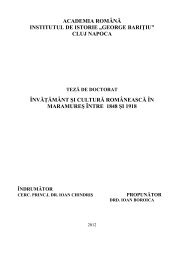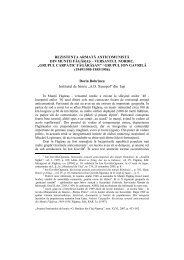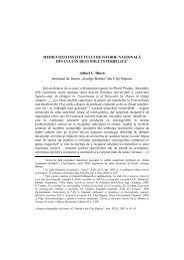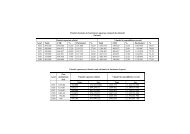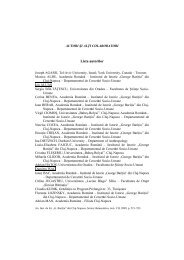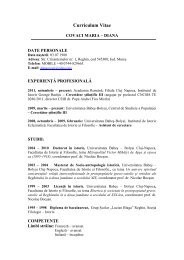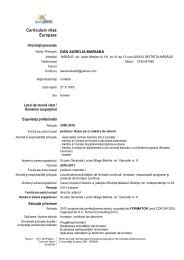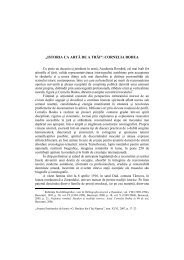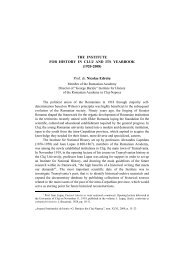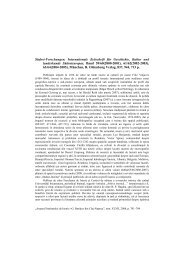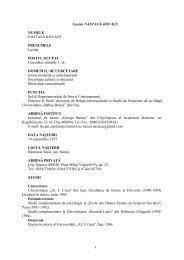INTRODUCERE ÃN FILOSOFIA STRUCTURAL ... - Institutul de Istorie
INTRODUCERE ÃN FILOSOFIA STRUCTURAL ... - Institutul de Istorie
INTRODUCERE ÃN FILOSOFIA STRUCTURAL ... - Institutul de Istorie
Create successful ePaper yourself
Turn your PDF publications into a flip-book with our unique Google optimized e-Paper software.
SUMMARY<br />
Several <strong>de</strong>ca<strong>de</strong>s ago, information has become a major issue in the contemporary<br />
philosophy of science. Such phenomena as qualia or, for instance, non-separability as a<br />
consequence of the quantum mechanics theory cannot be <strong>de</strong>alt without the concept of<br />
information. Insi<strong>de</strong> the literature of this subject-matter there are two well known and highly<br />
opposite one another main points of view:<br />
1) The first kind of approaches consi<strong>de</strong>rs information from the si<strong>de</strong> of cybernetics and<br />
semantics – i.e. the theory of actualization of the potential information through the process of<br />
communication; this is the so-called „structural science” (= the theories of information<br />
starting with Shannon and Wiener).<br />
2) The second kind of approaches sees information as an autonomous and potential universe,<br />
irreductible to the aspects of digital and actualized information. Into this second category are<br />
to find structural-phenomenological orthophysics and transdisciplinarity. They both conceive<br />
the phenomenon of information in the sense above-mentioned (as an autonomous and<br />
potential universe). Thus, the quantitative limitation of the classical theory of information to<br />
the <strong>de</strong>triment of study of the qualitative aspects of information is criticized.<br />
This book is a critical and systematical account for the contributions of Acad. Prof. M.<br />
Drăgănescu’s structural-phenomenological ontological mo<strong>de</strong>l to the contemporary<br />
philosophical thought. The author conducted the research on orthophysics as follows: the first<br />
section of the book is <strong>de</strong>dicated to some famous philosophers, both foreign (Aristotle and<br />
Kant) and Romanian (Eminescu, Conta, Blaga) for the purpose of emphasizing as many<br />
„anticipations”, which M. Drăgănescu advocates in the favour of his ontological mo<strong>de</strong>l; the<br />
second section is an attempt of comparative ontological analysis between the RE mo<strong>de</strong>l and<br />
some contemporary outstanding i<strong>de</strong>as of thinkers like Whitehead, Hei<strong>de</strong>gger and Romanian<br />
Noica, orthophysics looking for a pathway toward a possible „critique of structural reason”;<br />
the third section <strong>de</strong>als with the vocabulary of orthophysics, with its epistemological and<br />
linguistical characteristics, as well as with the structural-phenomenological principles of a<br />
new science in relationship with spirituality in the socio-human society.<br />
A first assumption of orthophysics is that nowadays paradigm of science, even if very<br />
powerful in the <strong>de</strong>scription, explanation and prediction of physical events, would not be able<br />
to account for information, the mental processes as well as for the phenomenon of life. Thus,<br />
199



